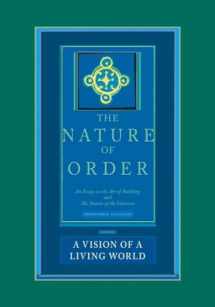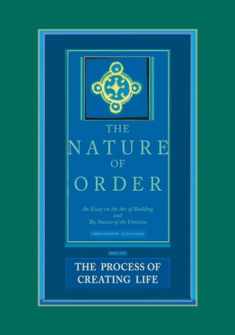
The Nature of Order: An Essay on the Art of Building and the Nature of the Universe, Book 3 - A Vision of a Living World (Center for Environmental Structure, Vol. 11)
Book details
Summary
Description
Christopher Alexander's series of ground-breaking books including A Pattern Language and The Timeless Way of Building have pointed to fundamental truths of the way we build, revealing what gives life and beauty and true functionality to our buildings and towns. Now, in The Nature of Order, Alexander explores the properties of life itself, highlighting a set of well-defined structures present in all order and in all life from micro-organisms and mountain ranges to good houses and vibrant communities.
From a practical point of view, A Vision of a Living World is the most compelling of the four books. Hundreds of photographs and plans of new buildings that have living structure, and the processes which gave them life, demonstrate, for the first time, what the concept of living structure can mean in buildings of our time and of the future.
The really good building. The really good space. Places that reach an archetypal level of human experience, reaching across centuries, across continents, across cultures, across technology, across building materials and climates. They connect us to ourselves. They connect us to our feelings. What is more, as we study them, we realize that they all share a similar geometry. How are they made? The practical task of making beauty is the principal subject of this volume.
Hundreds of examples of buildings and places are shown. New forms for large buildings, public spaces, communities, neighborhoods, lead to discussions about equally important small scale of detail and ornament and colour. Many of the examples are built by Alexander and his colleagues; other buildings explored take us around the world and through time.
With these examples, lay people, architects, builders, artists, and students are able to make this new framework real for themselves, understand how it works, and understand its significance. The book is a feast for the eyes, and mind, and heart. Places created by living process (Book 2) have living structure (Book 1), and they connect us to our essence as people (Book 4). The seven hundred pictures of Alexander's buildings and works of art shown in this book demonstrate in detail what he means.
Taken as a whole, the four books create a sweeping new conception of the nature of things which is both objective and structural (hence part of science) and also personal (in that it shows how and why things have the power to touch the human heart). A step has been taken, through which these two domains the domain of geometrical structure and the feeling it creates kept separate during four centuries of scientific though from 1600 to 2000, have finally been united.
The Nature of Order constitutes the backbone of Building Beauty: Ecologic Design Construction Process, an initiative aimed at radically reforming architecture education, with the emphasis of making as a way to access a transformative vision of the world. The 15 fundamental properties of life guide our work and have given us much more than a set of solutions. The Nature of Order has given us the framework in which we can search and build up our own solutions.
In order to be authentically sustainable, buildings and places have to be cared for and loved over generations. Beautiful buildings and places are more likely to be loved, and they become more beautiful, and loved, through the attention given to them over time. Beauty is therefore, not a luxury, or an option, it includes and transcends technological innovation, and is a necessary requirement for a truly sustainable culture.
'
Dr. Sergio Porta, International Director, Building Beauty ( www.buildingbeauty.org)
Professor of Urban Design, Director of Urban Design Studies Unit, and Director of Masters in Urban Design, University of Strathclyde


We would LOVE it if you could help us and other readers by reviewing the book
Book review





